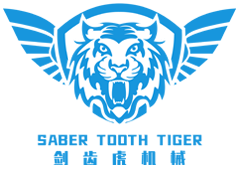10
2025
-
10
Exploring Variable Diameter Coil Winding Molds: Innovations in Manufacturing
In the manufacturing and machining sector, particularly within the die-casting and forging mold industry, the implementation of advanced technologies is crucial for maintaining competitive advantage. One such innovation is the variable diameter coil winding mold. These molds are essential in creating components with varying coil diameters, which can be critical for specific applications, such as t
In the manufacturing and machining sector, particularly within the die-casting and forging mold industry, the implementation of advanced technologies is crucial for maintaining competitive advantage. One such innovation is the variable diameter coil winding mold. These molds are essential in creating components with varying coil diameters, which can be critical for specific applications, such as transformers, inductors, and electric motors.
Variable diameter coil winding molds allow for the efficient production of coils that meet precise specifications. The design flexibility offered by these molds facilitates the production of coils with different diameters without the need for multiple tooling setups. This adaptability not only saves time during the manufacturing process but also reduces costs associated with tooling changes and setup time.
When designing a variable diameter coil winding mold, several key factors must be considered. Firstly, the material selection is crucial; high-quality materials that can withstand the stresses of winding processes while maintaining dimensional accuracy are essential. Common choices include steel and aluminum, depending on the application and production volume.
Another important consideration is the mold design itself. The design should incorporate features that enable smooth winding and minimize friction. This can be achieved by integrating appropriate surface finishes and geometries that facilitate the unwinding of wire and prevent entanglement. Additionally, provisions for cooling or heating can be integrated into the mold to optimize the winding process for different materials.
Moreover, the use of automation in the operation of variable diameter coil winding molds can further enhance efficiency. Automated winding systems can improve consistency and quality while reducing labor costs. With the integration of sensors and feedback mechanisms, manufacturers can ensure that the winding process is continuously monitored and adjusted as necessary, further improving the end product's quality.
It is also beneficial to utilize simulation software during the design phase of variable diameter coil winding molds. These tools allow for virtual testing of the mold design, helping to identify potential issues before physical production begins. By simulating the winding process, manufacturers can optimize parameters such as tension, speed, and coil placement, leading to better overall efficiency and quality control.
In conclusion, variable diameter coil winding molds represent a significant advancement in the manufacturing of coils for various applications. By understanding their design considerations and potential benefits, manufacturers in the die-casting and forging mold industry can leverage this technology to enhance their production capabilities, ultimately leading to improved product quality and operational efficiency. Embracing such innovations positions companies to stay competitive in an ever-evolving market.
Variable diameter coil winding molds allow for the efficient production of coils that meet precise specifications. The design flexibility offered by these molds facilitates the production of coils with different diameters without the need for multiple tooling setups. This adaptability not only saves time during the manufacturing process but also reduces costs associated with tooling changes and setup time.
When designing a variable diameter coil winding mold, several key factors must be considered. Firstly, the material selection is crucial; high-quality materials that can withstand the stresses of winding processes while maintaining dimensional accuracy are essential. Common choices include steel and aluminum, depending on the application and production volume.
Another important consideration is the mold design itself. The design should incorporate features that enable smooth winding and minimize friction. This can be achieved by integrating appropriate surface finishes and geometries that facilitate the unwinding of wire and prevent entanglement. Additionally, provisions for cooling or heating can be integrated into the mold to optimize the winding process for different materials.
Moreover, the use of automation in the operation of variable diameter coil winding molds can further enhance efficiency. Automated winding systems can improve consistency and quality while reducing labor costs. With the integration of sensors and feedback mechanisms, manufacturers can ensure that the winding process is continuously monitored and adjusted as necessary, further improving the end product's quality.
It is also beneficial to utilize simulation software during the design phase of variable diameter coil winding molds. These tools allow for virtual testing of the mold design, helping to identify potential issues before physical production begins. By simulating the winding process, manufacturers can optimize parameters such as tension, speed, and coil placement, leading to better overall efficiency and quality control.
In conclusion, variable diameter coil winding molds represent a significant advancement in the manufacturing of coils for various applications. By understanding their design considerations and potential benefits, manufacturers in the die-casting and forging mold industry can leverage this technology to enhance their production capabilities, ultimately leading to improved product quality and operational efficiency. Embracing such innovations positions companies to stay competitive in an ever-evolving market.
Related news





